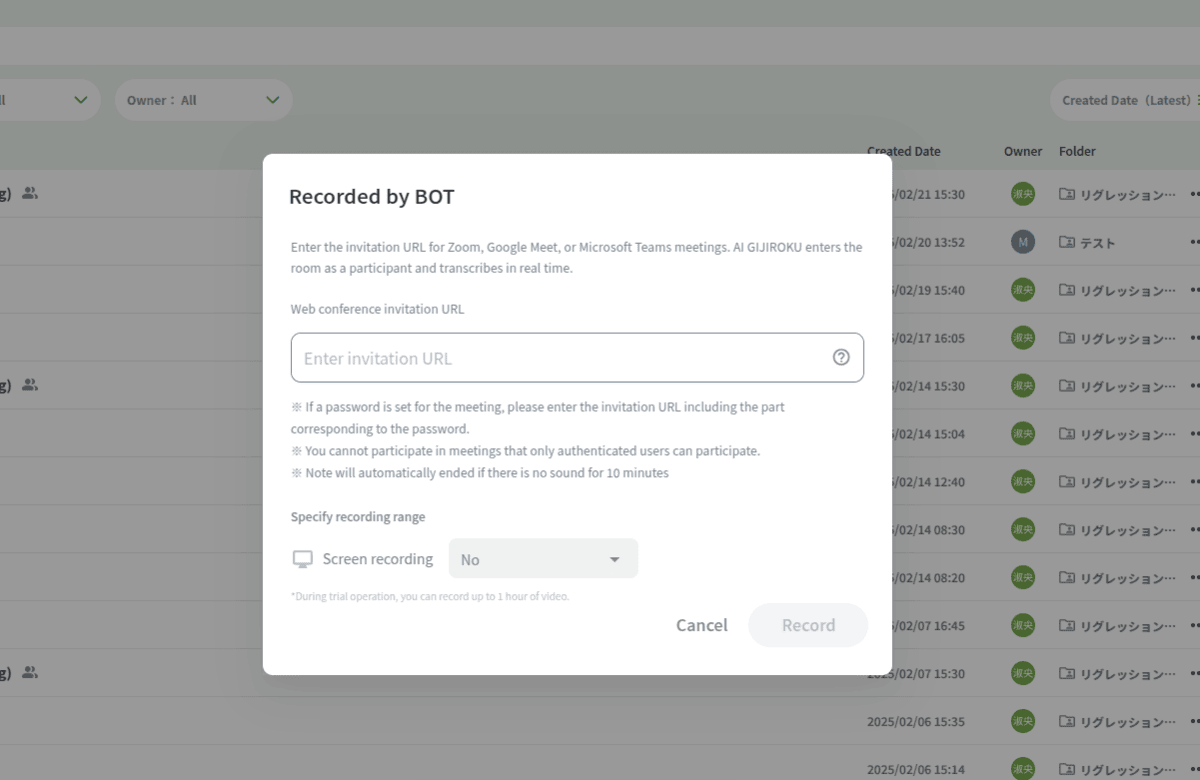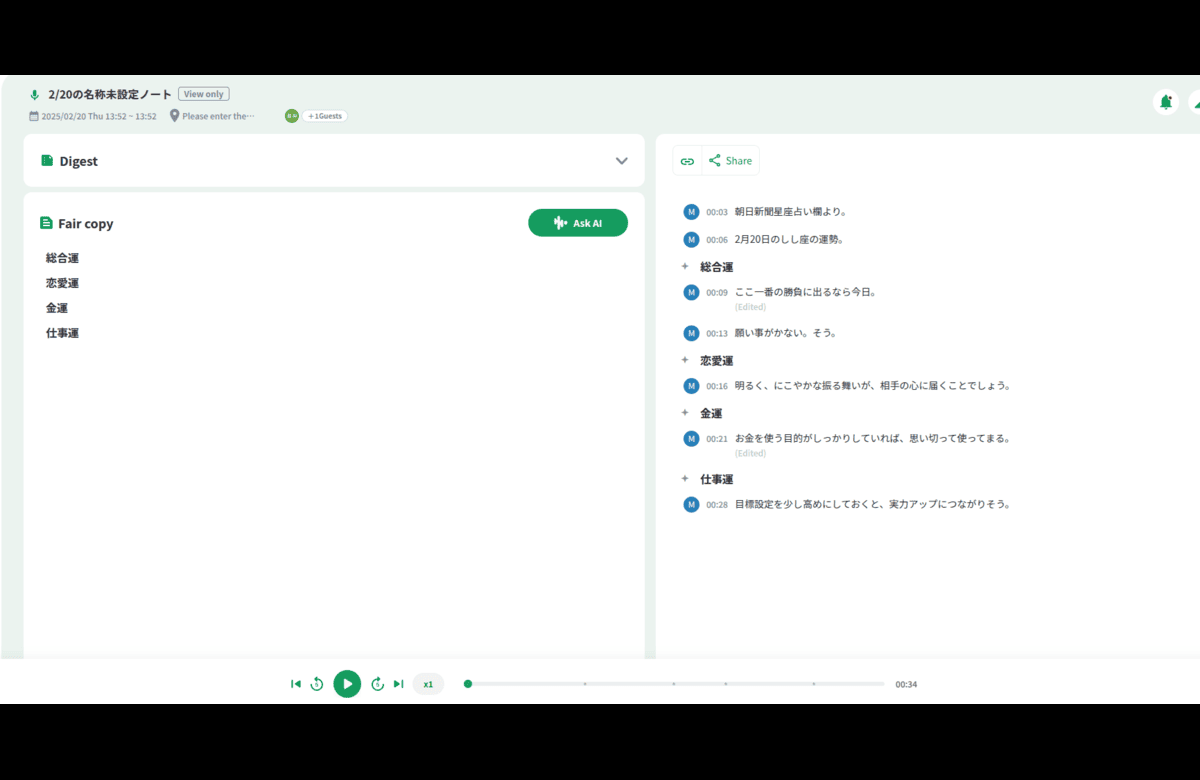
AIG BOT PRODUTION
AI GIJIROKU


Meeting Recording Methods: There are multiple ways to record a meeting: Users can record the screen directly from their own device to capture both audio and video of the meeting. Alternatively, the system can join the meeting as a guest participant and record it. Scheduled recordings can be automated by creating meetings on Google Calendar or Microsoft Calendar. From these recordings, the speech-to-text feature can transcribe the meeting, distinguishing different speakers and recognizing their voices. During the recording, real-time multilingual translation is available, along with text-to-speech playback of translated content. A built-in dictionary function allows users to replace specific words with their preferred alternatives based on custom settings. Users can edit transcribed text, review recordings, and share meetings with individuals or groups. Additionally, an AI-powered meeting summary feature can generate key takeaways. Users can also issue commands using sentences to instruct AI, such as: Summarizing content to create reports Assigning tasks to specific members, etc. Moreover, an import function enables users to transcribe video or audio files into structured notes using speech-to-text (S2T).
May include administrator name, account email address, billing information, and account plan information.
May include user name, display name, picture, email address, phone number, job information, stated locale, account, user ID, contact lists added by the account or user (which may include contact information a user imports from a third-party app), and other profile information.
Information about participants’ computers, phones, and other devices, which may include information about speakers, microphone, and camera, OS version, hard disk ID, PC name, MAC address, IP address (and general location at the country level derived from it), and other device information.
May include access to calendar of scheduled Zoom meetings and webinars, and related details about those meetings and webinars.
Preferences and settings, which may include whether a passcode or a waiting room is required, permitted event capacity, screen sharing settings, and other settings and configuration information.
Information that is necessary for the app to function properly, which may include your Zoom user ID, session IDs, meeting role, and other basic identifiers and information about your meeting, webinar, or chat.
May include name, display name, email address, phone number, user ID, and other profile information.
Content generated in Zoom products, which may include audio, video, messages, transcriptions, feedback, responses to polls and Q&A, and files, and related context , such as invitation details, meeting or chat name, and meeting agenda.
Information people provide when registering for a Zoom meeting, webinar or recording, which may include name and contact information, responses to registration questions, and other registration information.
Information about how people and their devices interact with Zoom products, which may include when participants join/leave, whether participants sent messages and who they message with, performance data, and other usage information and metrics.
Manage cameras and microphones on the device(s) where you use this app, including switching between available cameras and microphones (e.g. laptop, webcam) and turning them on/off.
Manage your account, which may include creating sub-accounts or changing account plan options.
Manage account profile and contact information, which may include adding or removing users, or updating a user's role, group, name, display name, picture, email address, phone number, job information, location, and other profile information if authorized by a user with appropriate permissions.
Manage preferences and settings on the account or profile using the app, which may include updating meeting and webinar configuration preferences, email notification preferences, and configuring Zoom Phone, Zoom Room, and telephony devices.
Manage content and information generated in the context of Zoom experiences, which may include audio, video, messages, meeting or chat name, agenda, transcriptions, and responses to polls and Q&A.
Manage participants, which may include assigning participants to specific breakout rooms and specifying an interpreter for the session.
Manage registration information, which may include scheduling Zoom experiences or adding or deleting registrants.
User
user:read:zak